Automating trade with trade routes
While transports can move cargo around and trade manually, regularly moving large volumes like this will get cumbersome. Especially if the cargos are related to production industry that consumes inputs and produces outputs every turn, it makes sense to automate the transport shifting these cargos.
In this post we’ll set up an export route for furniture to increase the profits of a production chain that is oversupplying the local market, and see if we can edge into the import/export business while at it.
The production chain
We’re splitting our own timber and crafting that into furniture to supply our town, with peasants from our farmsteads supplying some of the labour.
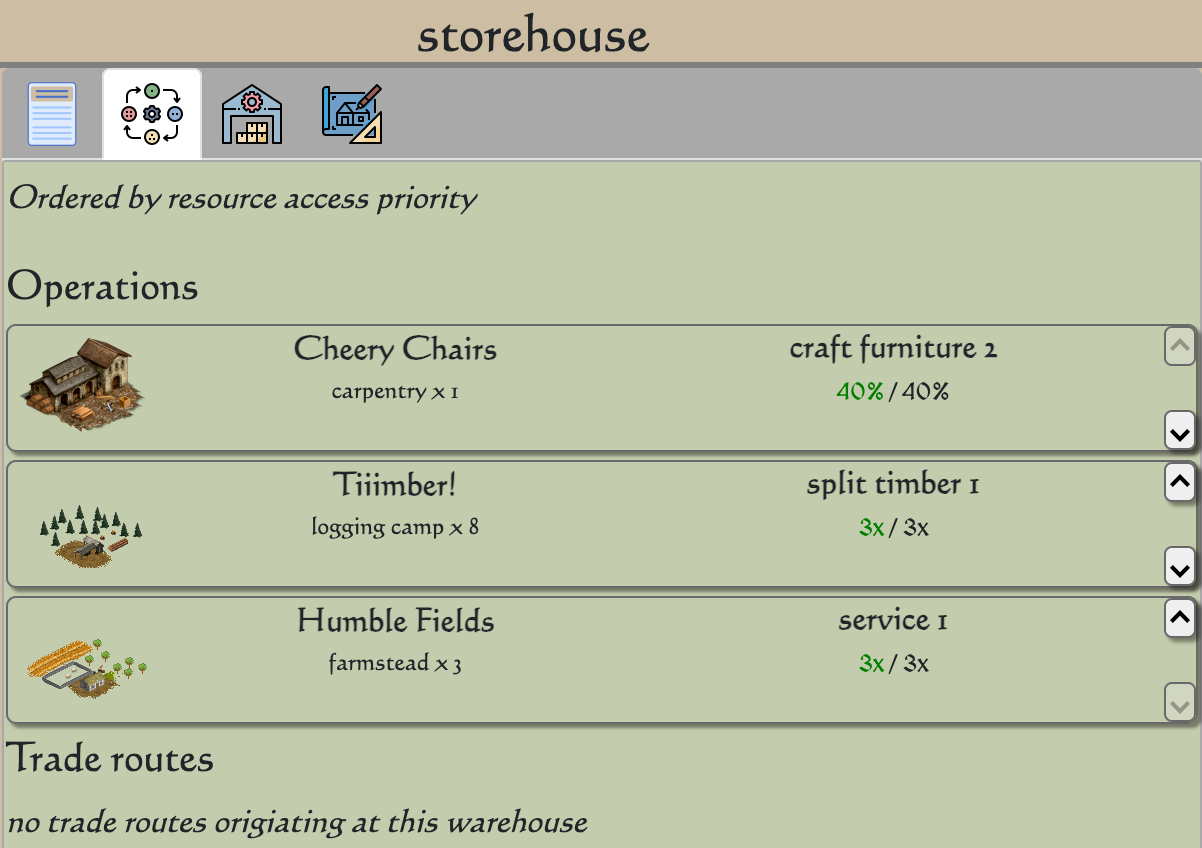

The operational side of things is running smoothly, but sales are struggling. Drilling into the data more, we can see that we’re both selling too cheaply and not selling enough.
 Unhealthy financials; the razor thin profits are not supporting our operation, and inventory is growing, tying up additional funds. While stocking up on some inputs can often be a good idea, we’re accumulating unsold finished goods, which is almost always a bad sign.
Unhealthy financials; the razor thin profits are not supporting our operation, and inventory is growing, tying up additional funds. While stocking up on some inputs can often be a good idea, we’re accumulating unsold finished goods, which is almost always a bad sign.
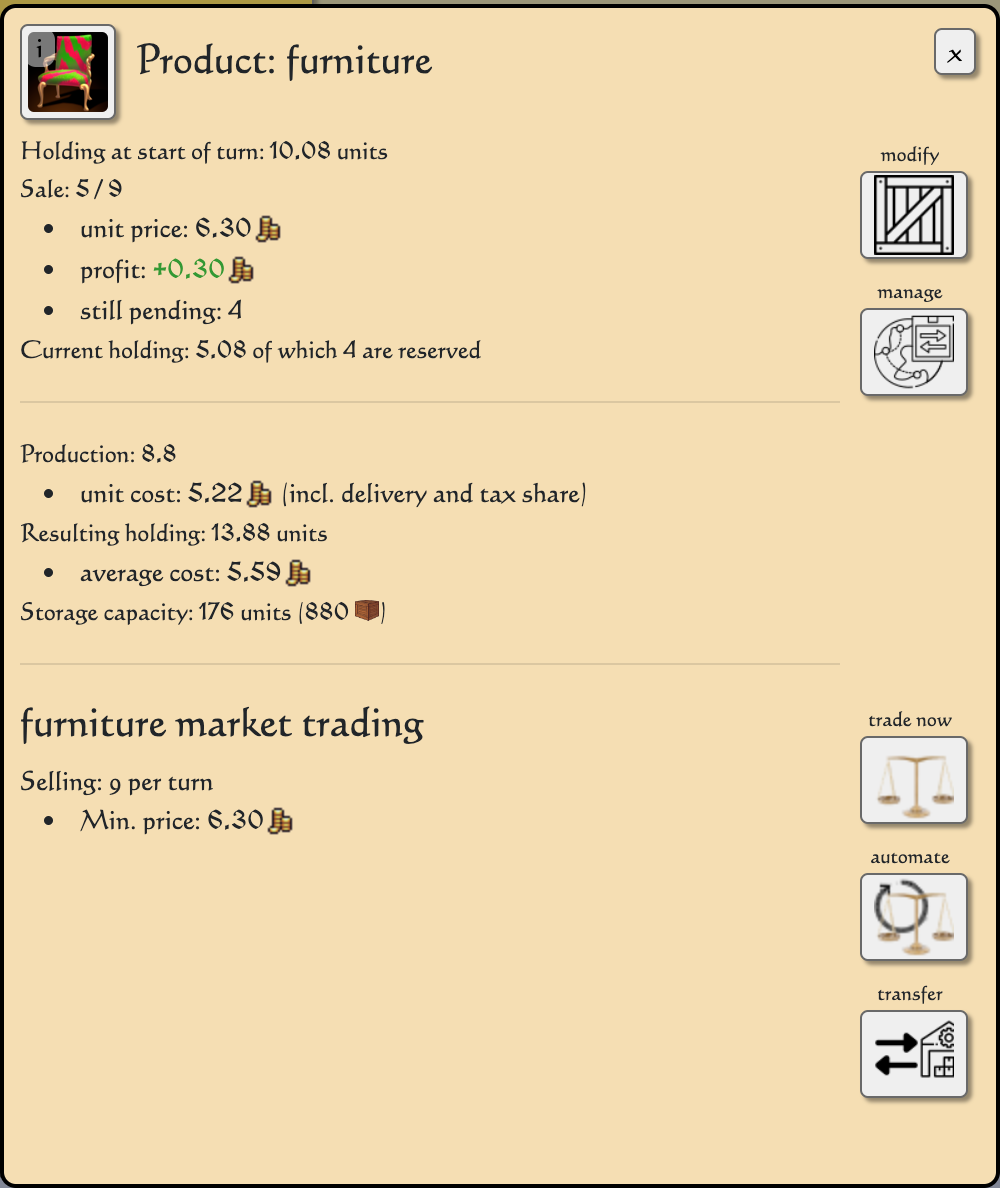 Production of 8.8 and sales of 5 is not sustainable. And we can’t boost sales by lower the price as profits are already thin (in this case we could probably reduce input costs, but that’s a topic for another time).
Production of 8.8 and sales of 5 is not sustainable. And we can’t boost sales by lower the price as profits are already thin (in this case we could probably reduce input costs, but that’s a topic for another time).
New markets
With low local demand for our product (furniture), we need to find new markets. There can be large demand and price variations between towns, so it can pay to check around for large consumers (or jump into the discord channel to ask if anyone nearby are in need of your product). In our case we’ll just poke around in our immediate neighbourhood.
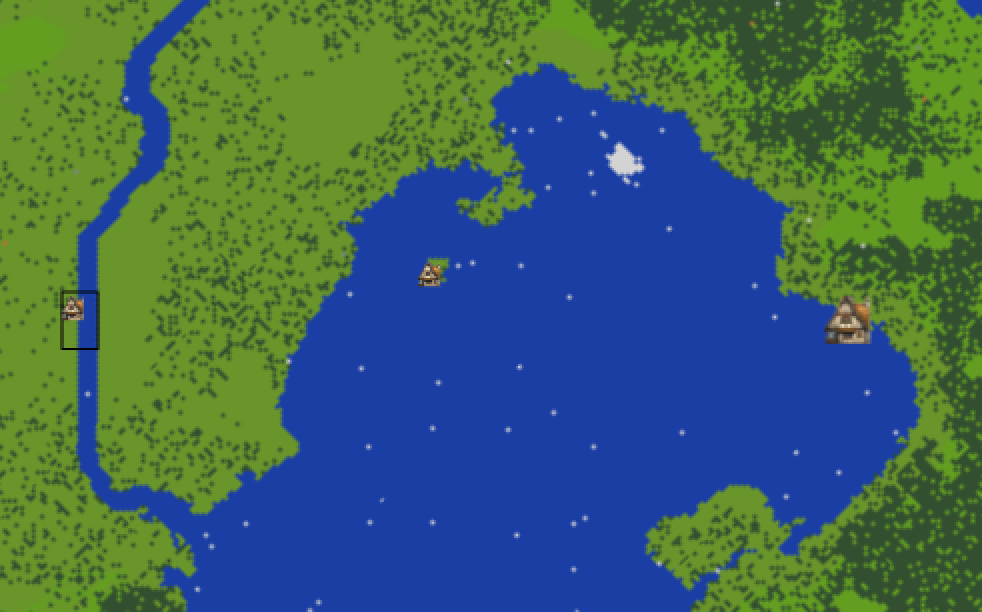 The minimap shows our hometown Badmund on the right, and our potential new market, Draumhausen, on the left.
The minimap shows our hometown Badmund on the right, and our potential new market, Draumhausen, on the left.
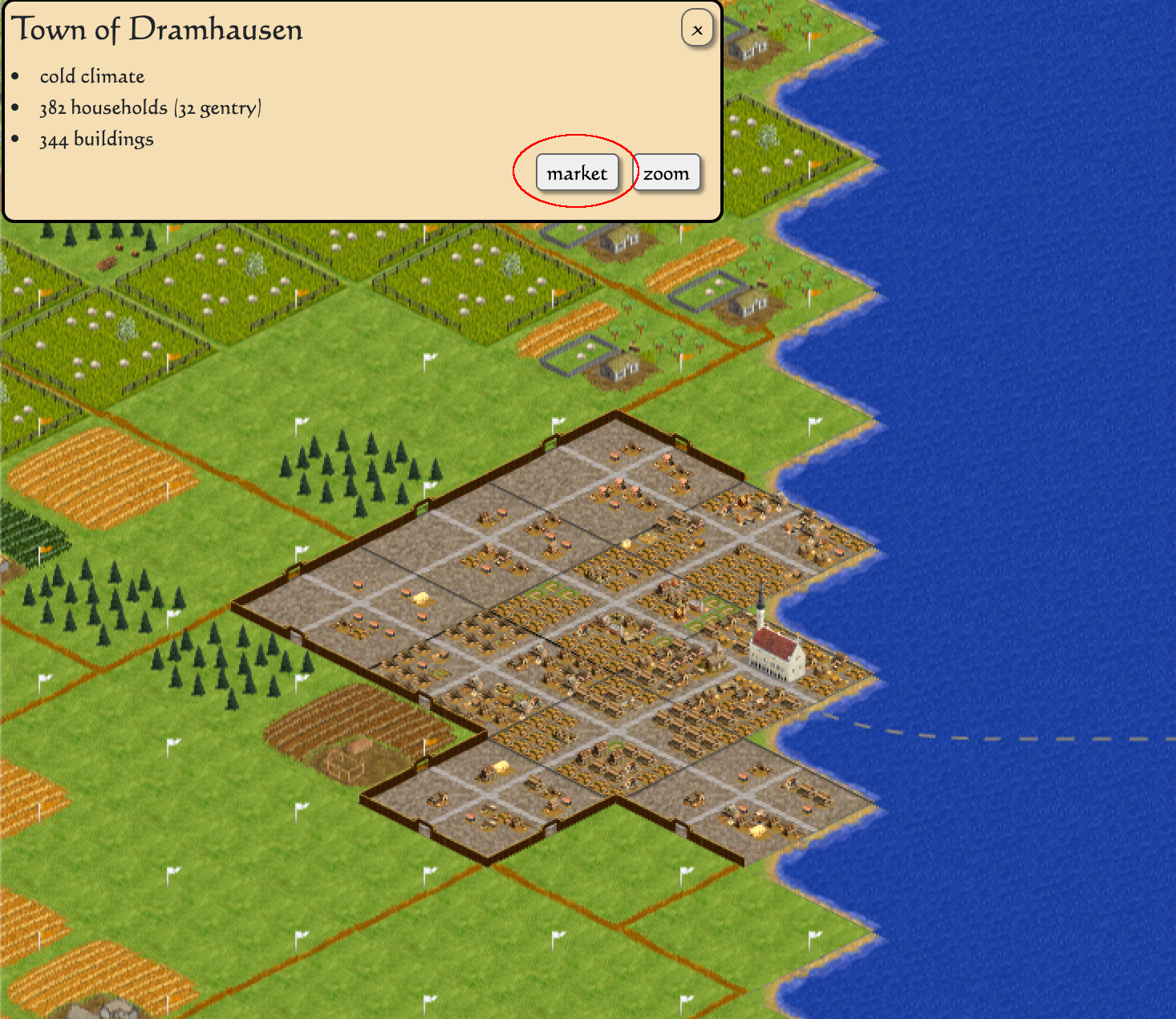
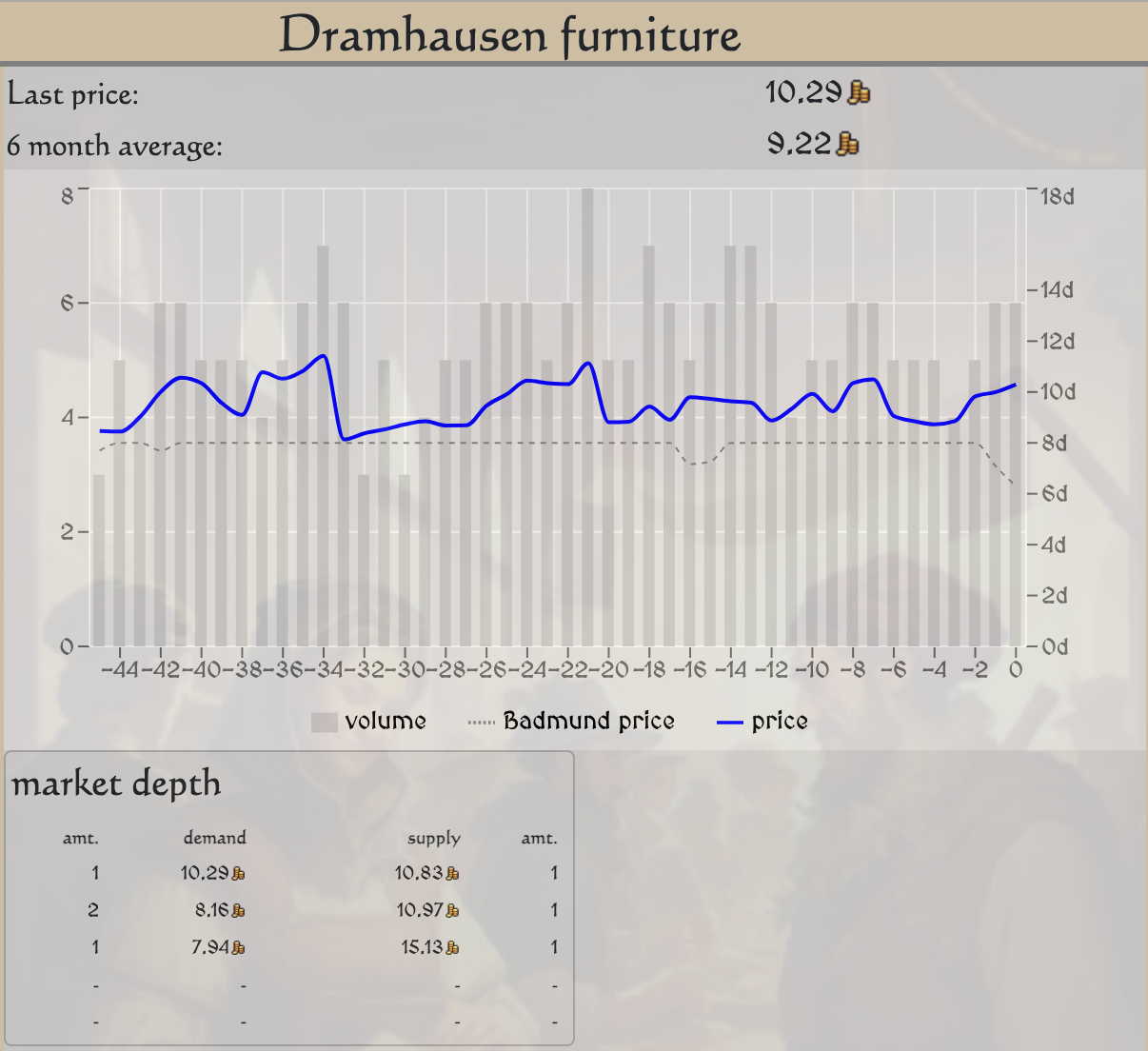
The furniture price is somewhat higher here, and not (yet) pushed down by our production, we’ll give it a go.
Getting there
Every player starts with a handcart which can be used for trade with nearby towns. However, transportation over sea has longer range and is much more efficient, so we prefer that whenever possible. Thus we have to obtain a ship.
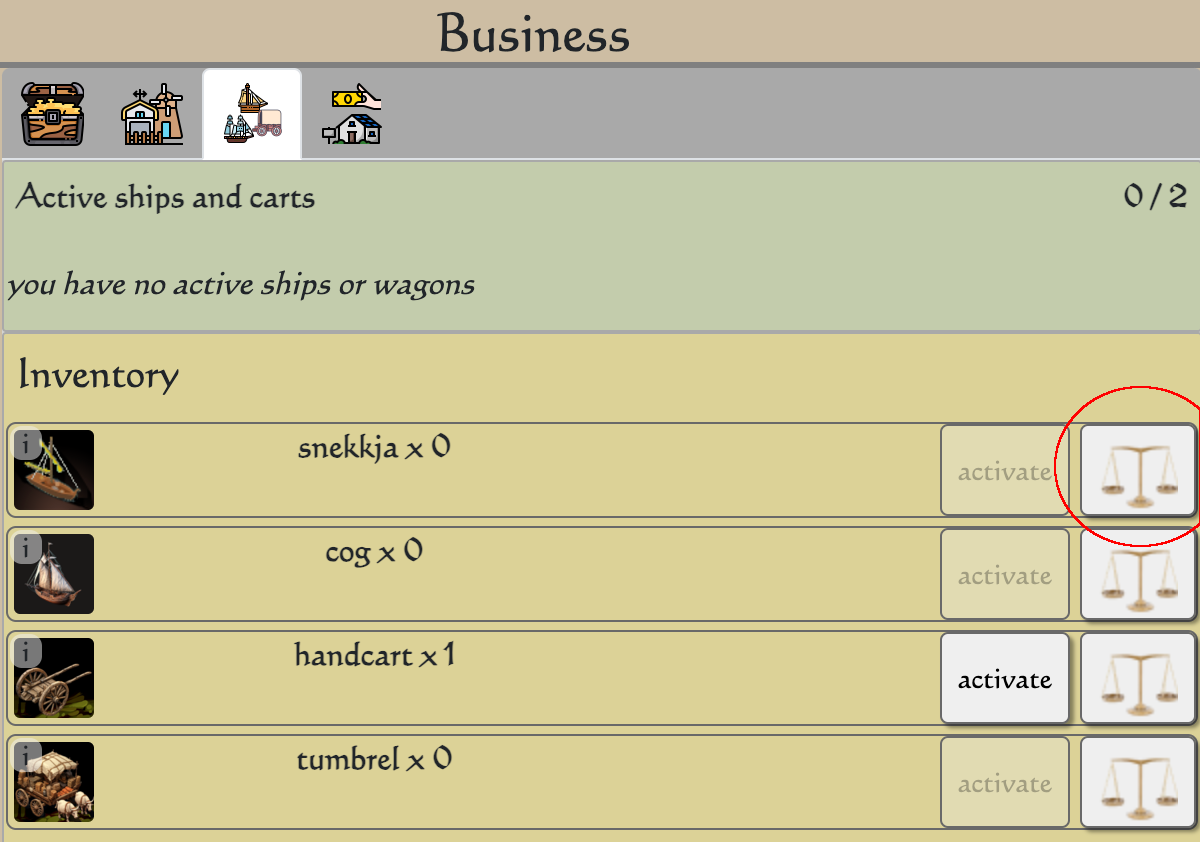 The market button will take us to nearby markets for snekkjas, if they exists.
The market button will take us to nearby markets for snekkjas, if they exists.
 Badmund has a market and it has a reasonable ask (offer) on it. If we didn’t have any nearby market for the transport we want, we need to go look for one with our handcart.
Badmund has a market and it has a reasonable ask (offer) on it. If we didn’t have any nearby market for the transport we want, we need to go look for one with our handcart.
After acquiring a snekkja, we activate it to get it on the water.
 Operating a transport is similar to production buildings, we need to fund it and set an operation target.
Operating a transport is similar to production buildings, we need to fund it and set an operation target.
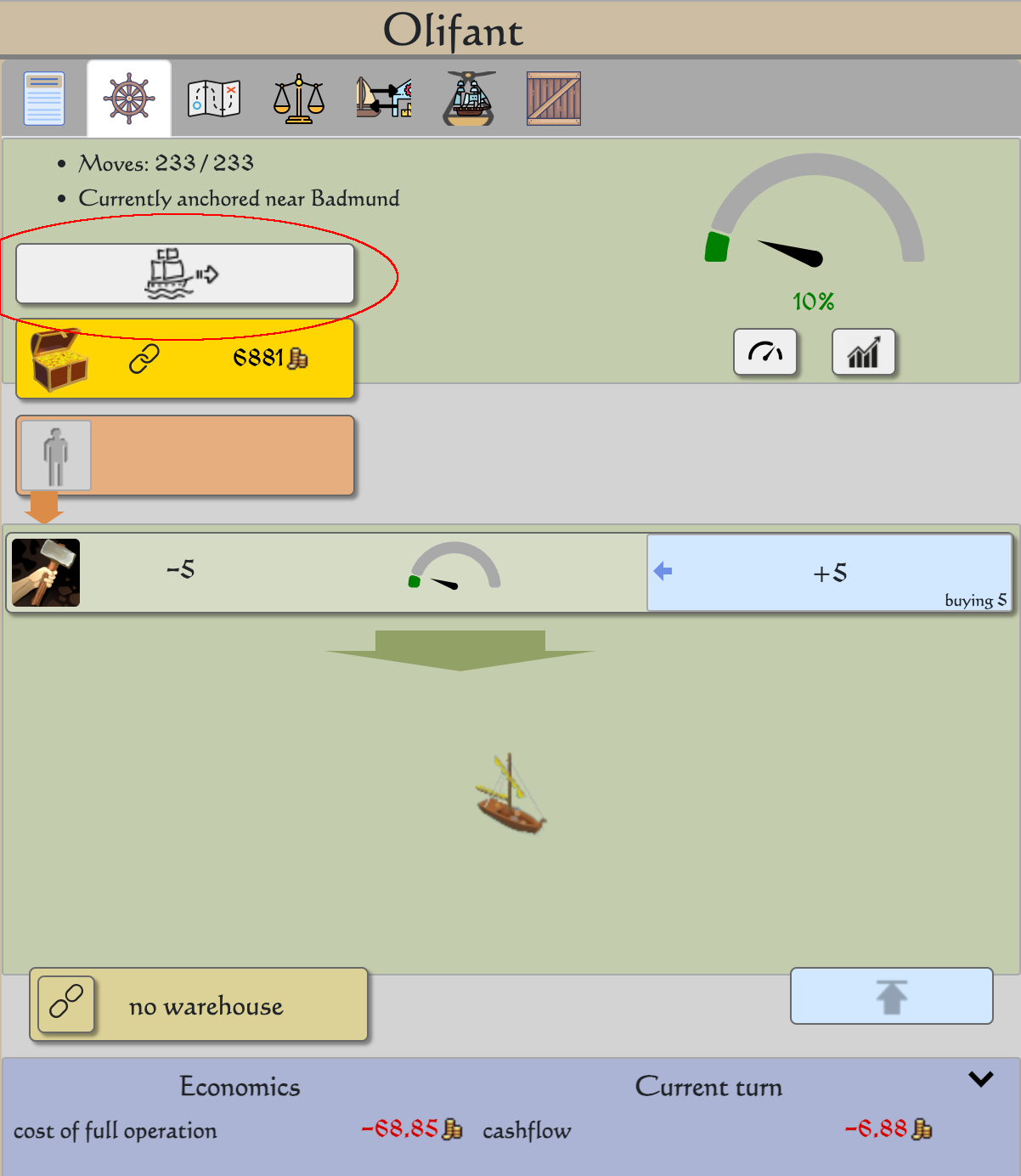 Once the snekkja is operational we can move out.
Once the snekkja is operational we can move out.
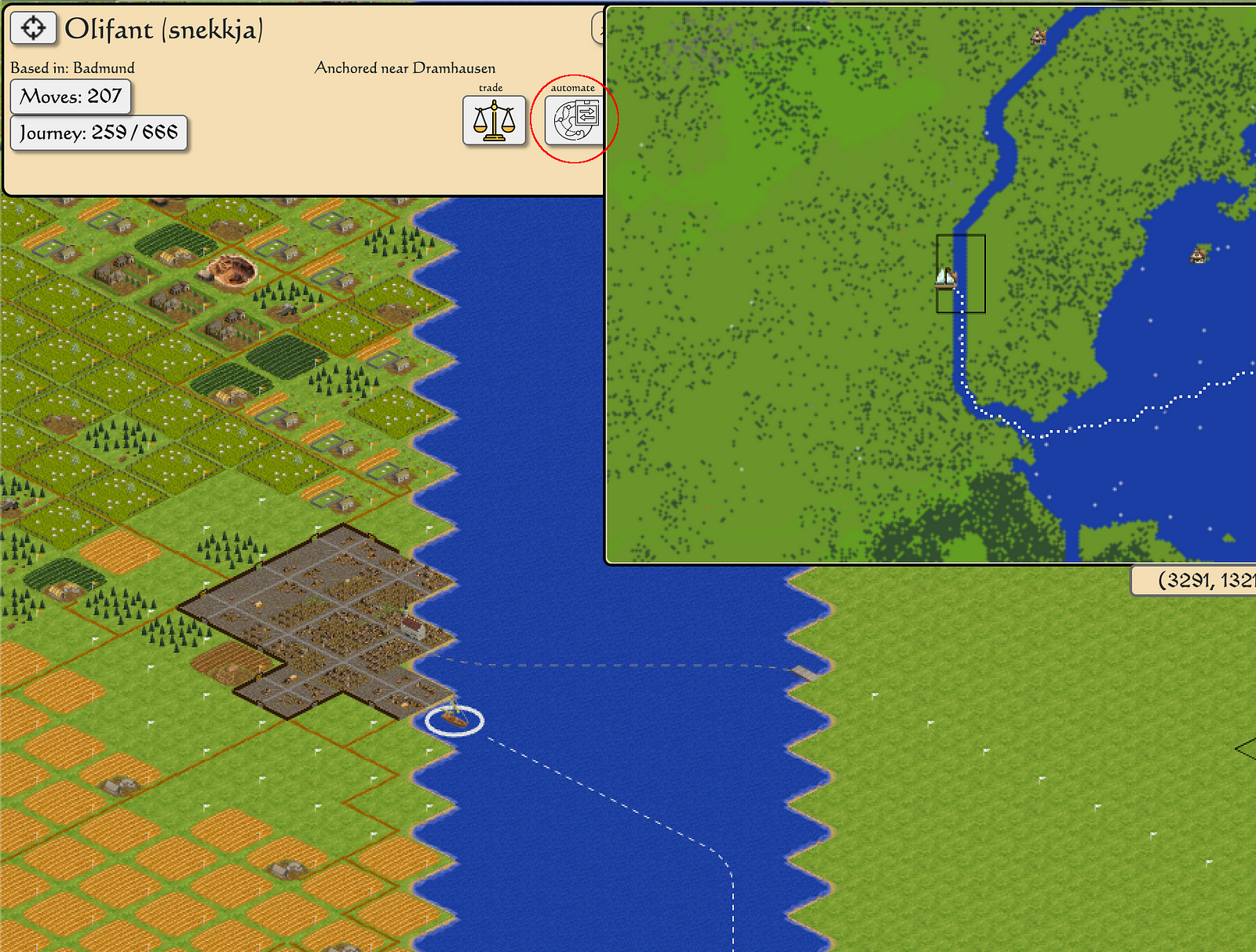 We sail over to Draumhausen and click automate to set up a trade route.
We sail over to Draumhausen and click automate to set up a trade route.
 The trade route is set up and ready to commence importing and exporting.
The trade route is set up and ready to commence importing and exporting.
Moving the product
Once the route is up and running, we can configure automated trade orders in Draumhausen as we would on our local market.
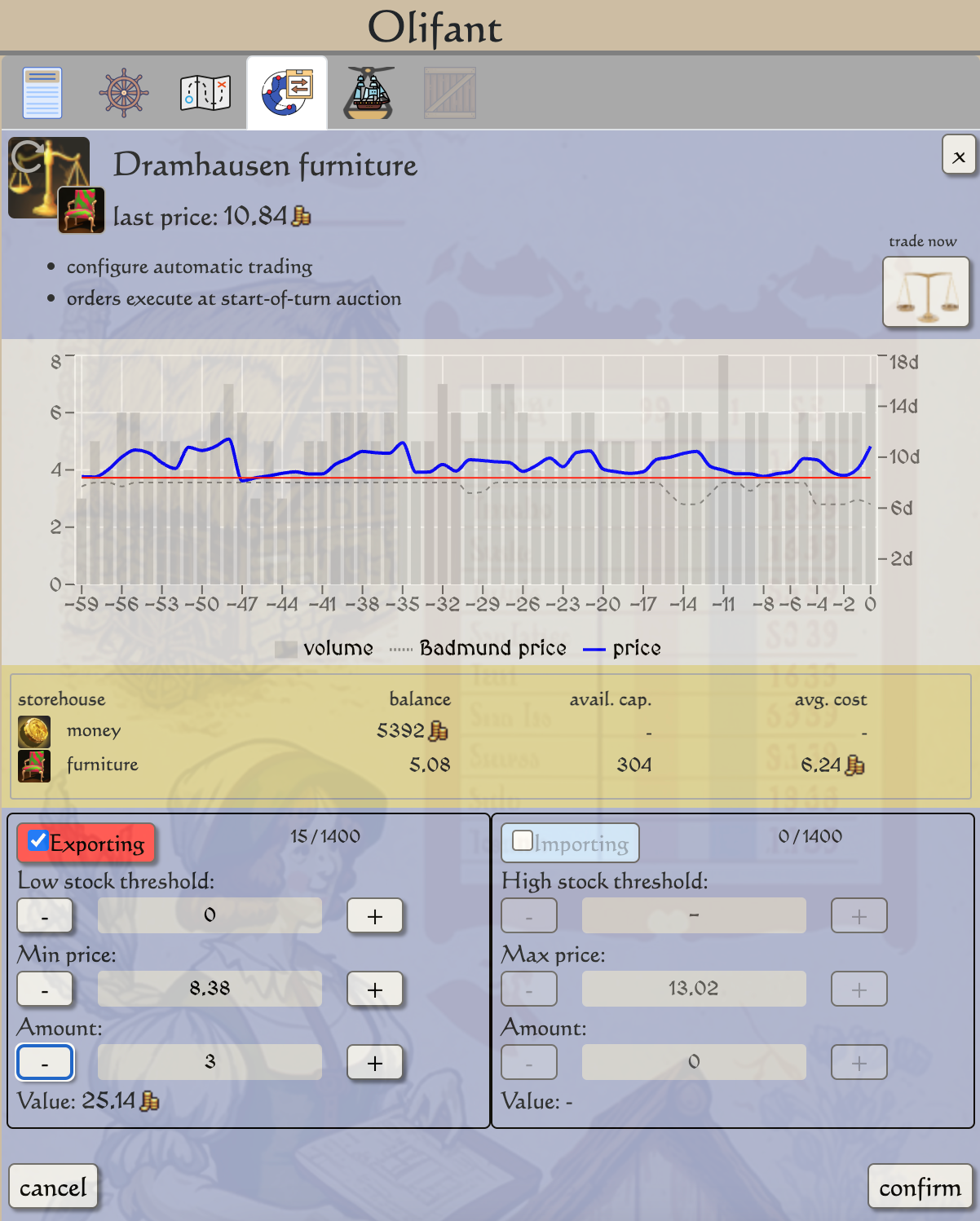 We find our product in the product list and configure an export order. The market in Draumhausen is also relatively thin, so we need to be careful not to throw too much supply at it. Alternatively we can set a high minimum price, but the trade route will reserve capacity for the full amount set here; capacity we might want to use for other products.
We find our product in the product list and configure an export order. The market in Draumhausen is also relatively thin, so we need to be careful not to throw too much supply at it. Alternatively we can set a high minimum price, but the trade route will reserve capacity for the full amount set here; capacity we might want to use for other products.
The trade route will now automatically export furniture every turn, distributing our supply across more consumers and hopefully achieving better prices in both markets, or allowing us to scale up our operation.
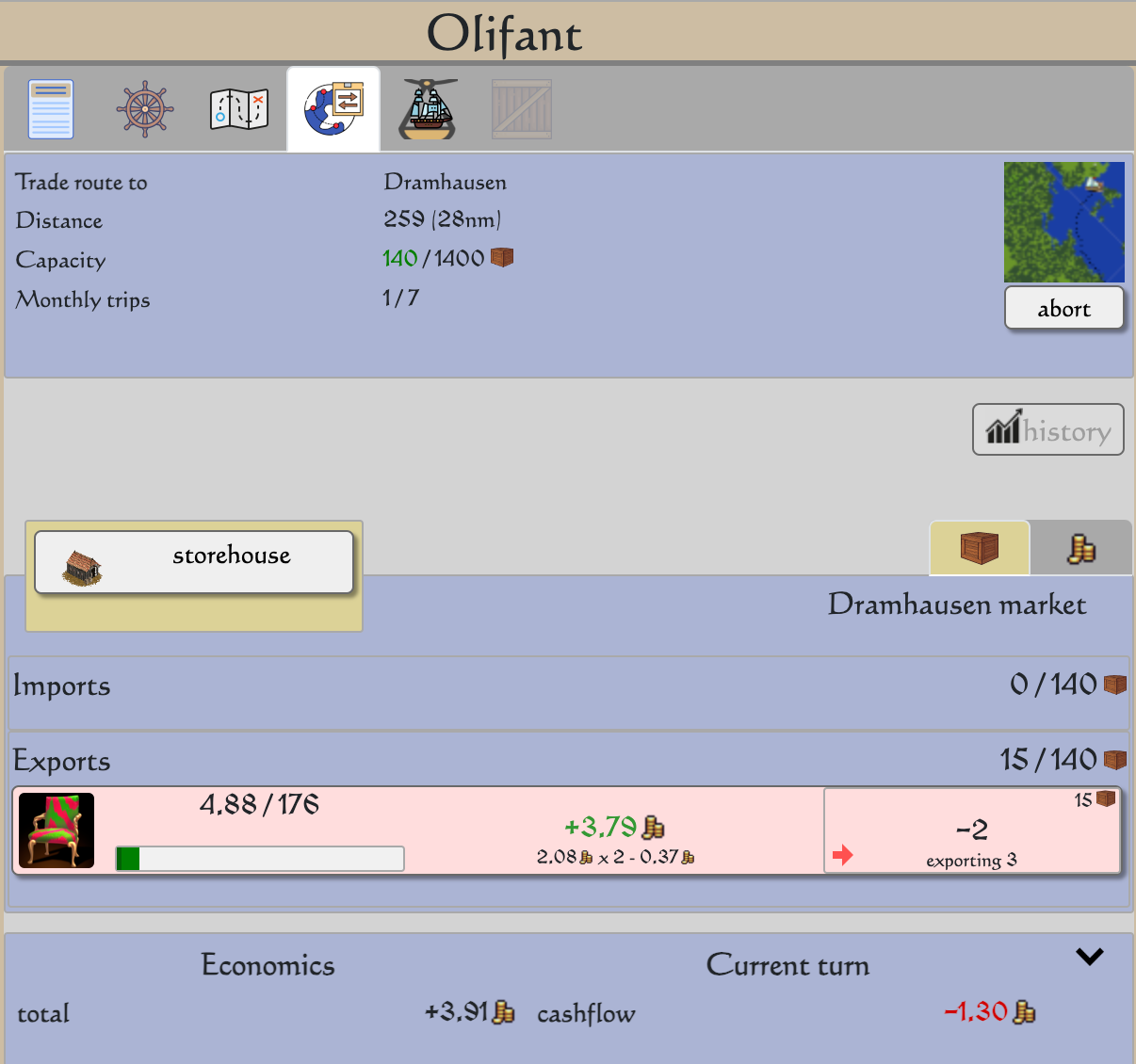 The export order is up and running. We’re only using a fraction of the trade route capacity though, not even the 3 slots reserved for furniture.
The export order is up and running. We’re only using a fraction of the trade route capacity though, not even the 3 slots reserved for furniture.
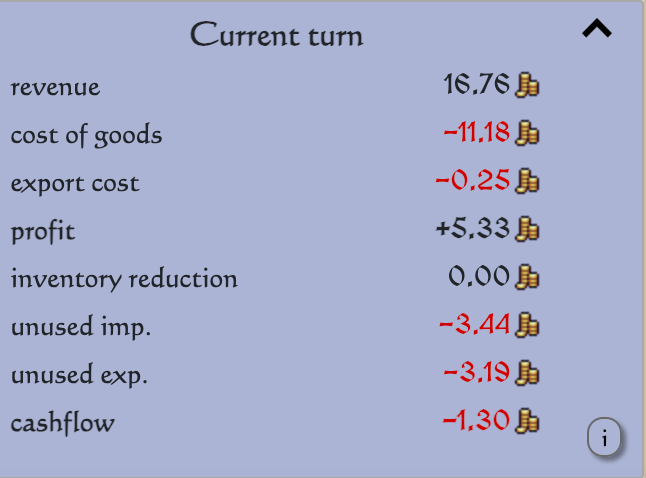 Drilling into the cashflow we see that we’re making good money on our exported goods, but the unused capacity is weighing on our finances. From an accounting perspective the operating cost of the transport is split equally between import and export. Here though the capacity in both directions is mostly unutilized.
Drilling into the cashflow we see that we’re making good money on our exported goods, but the unused capacity is weighing on our finances. From an accounting perspective the operating cost of the transport is split equally between import and export. Here though the capacity in both directions is mostly unutilized.
Filling up the ships
Our snekkja trade route has a lot of capacity at this short distance, much more than needed for our furniture exports. Unless you’re producing large volumes or already have a massive profit margin, the trade route needs to be properly utilized to positively contribute to your economy.
A good first step is to look for price differences in other products you’re already handling.
 Draumhausen has (slightly) cheaper cloth and apparently a timber shortage (in fact, it turns out we could probably make more money just exporting raw timber, no need to turn it into seats — or we can scale up our logging operations enough to do both)
Draumhausen has (slightly) cheaper cloth and apparently a timber shortage (in fact, it turns out we could probably make more money just exporting raw timber, no need to turn it into seats — or we can scale up our logging operations enough to do both)
After that you can start filling up the capacity with whatever has significant (and relatively stable) differences in price.
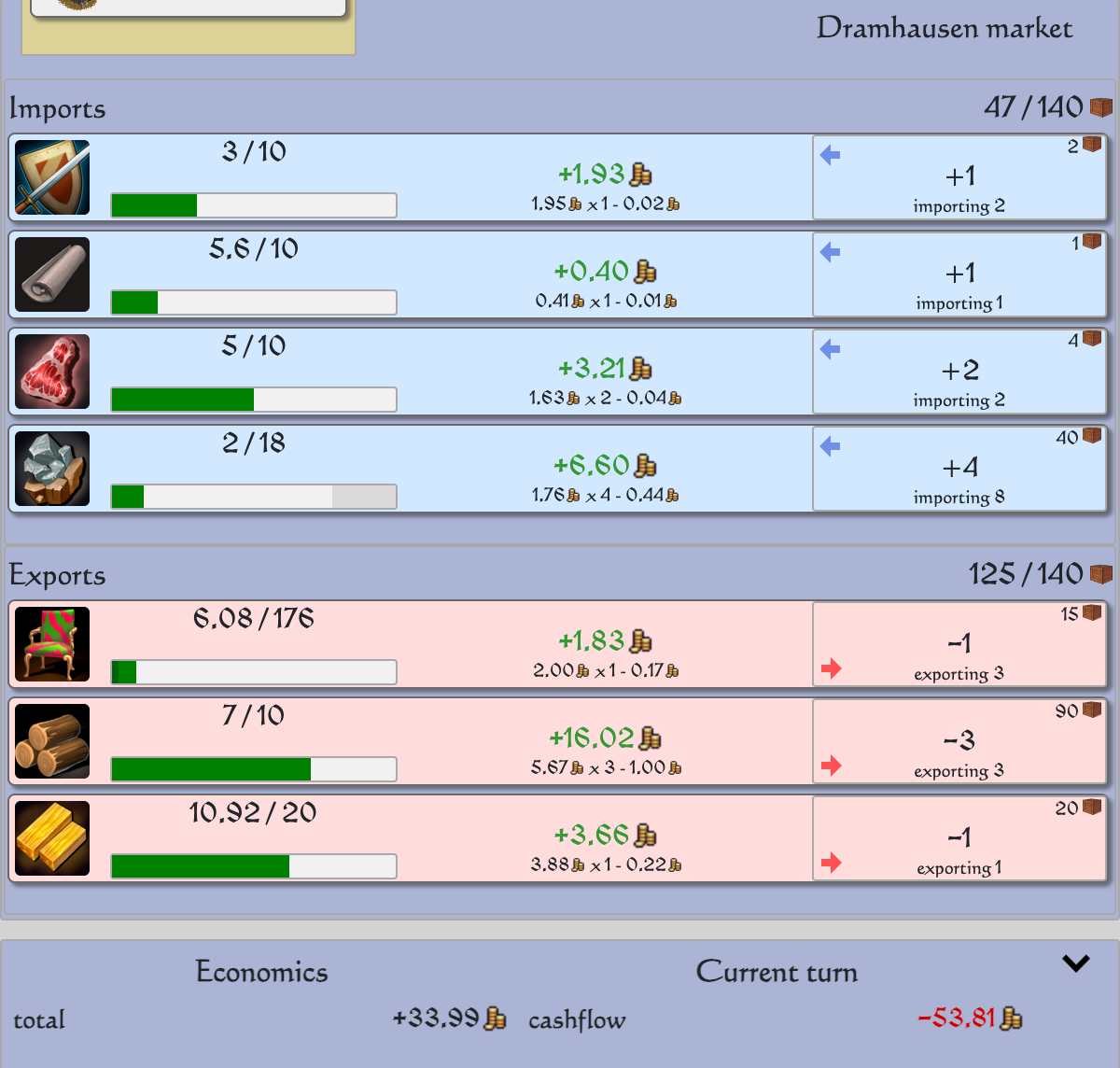 As mentioned, Draumhausen seems to be short on all kinds of wood. These logs are not produced by us, but simply purchased at a much lower price at the Badmund market. On the other hand, iron, arms and meat are cheaper in Draumhausen so we bring those with us back.
As mentioned, Draumhausen seems to be short on all kinds of wood. These logs are not produced by us, but simply purchased at a much lower price at the Badmund market. On the other hand, iron, arms and meat are cheaper in Draumhausen so we bring those with us back.
 Our cashflow is getting worse, but this is due to how imports are accounted for. We’re making a healthy profit on exports, while imports are counted as inventory growth. The revenue and profit for these will show up in the storehouse once the imported goods are sold.
Our cashflow is getting worse, but this is due to how imports are accounted for. We’re making a healthy profit on exports, while imports are counted as inventory growth. The revenue and profit for these will show up in the storehouse once the imported goods are sold.
With the trade route operating properly we have another leg to stand on, as well as more possibilities for expansion. In parallel with our furniture production, we can expand into producing and exporting the various forms of raw wood. We might also be able to import cheap tools or axes to further lower our wood production costs (or forge these ourselves from the cheap iron now flowing through our storehouse).


